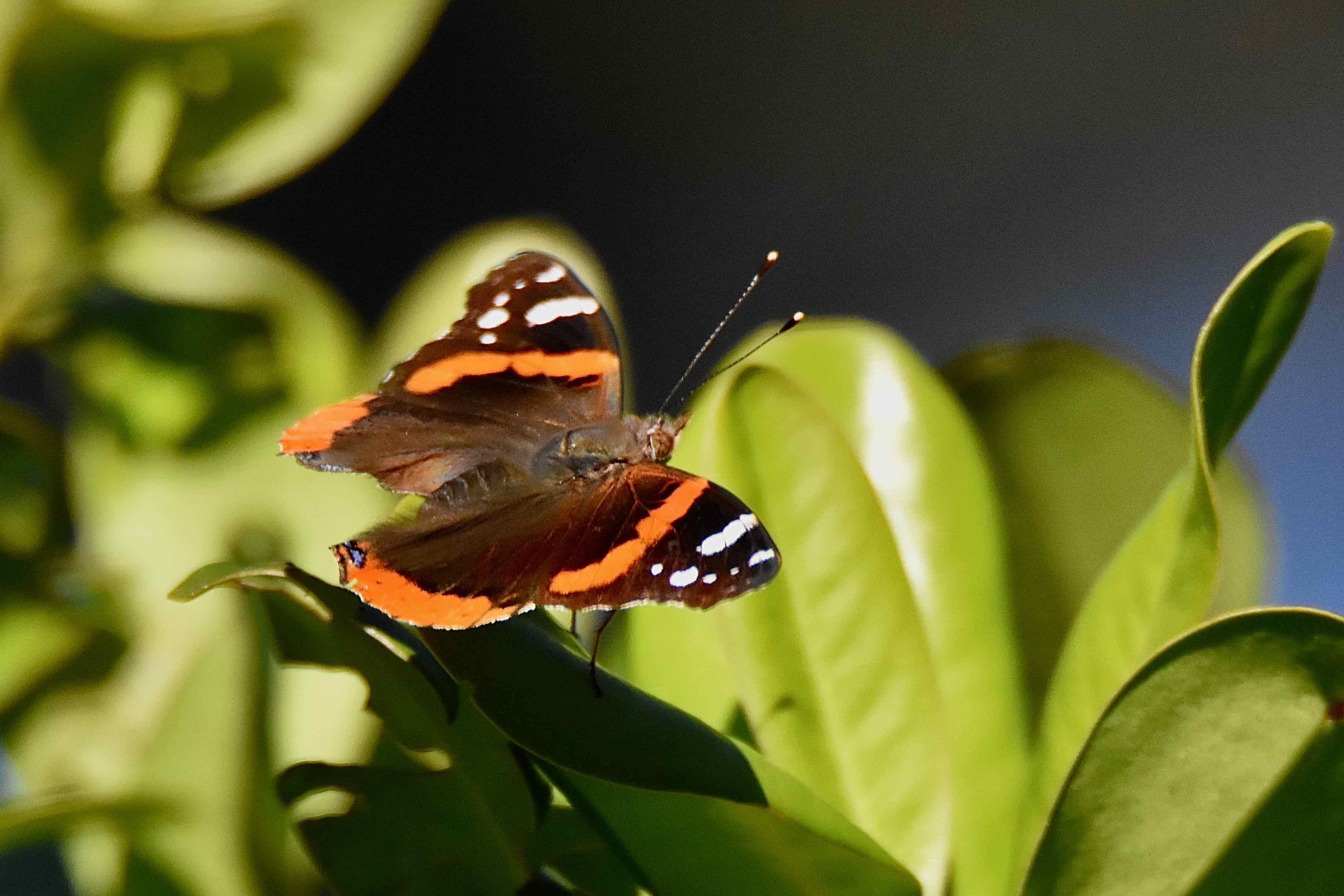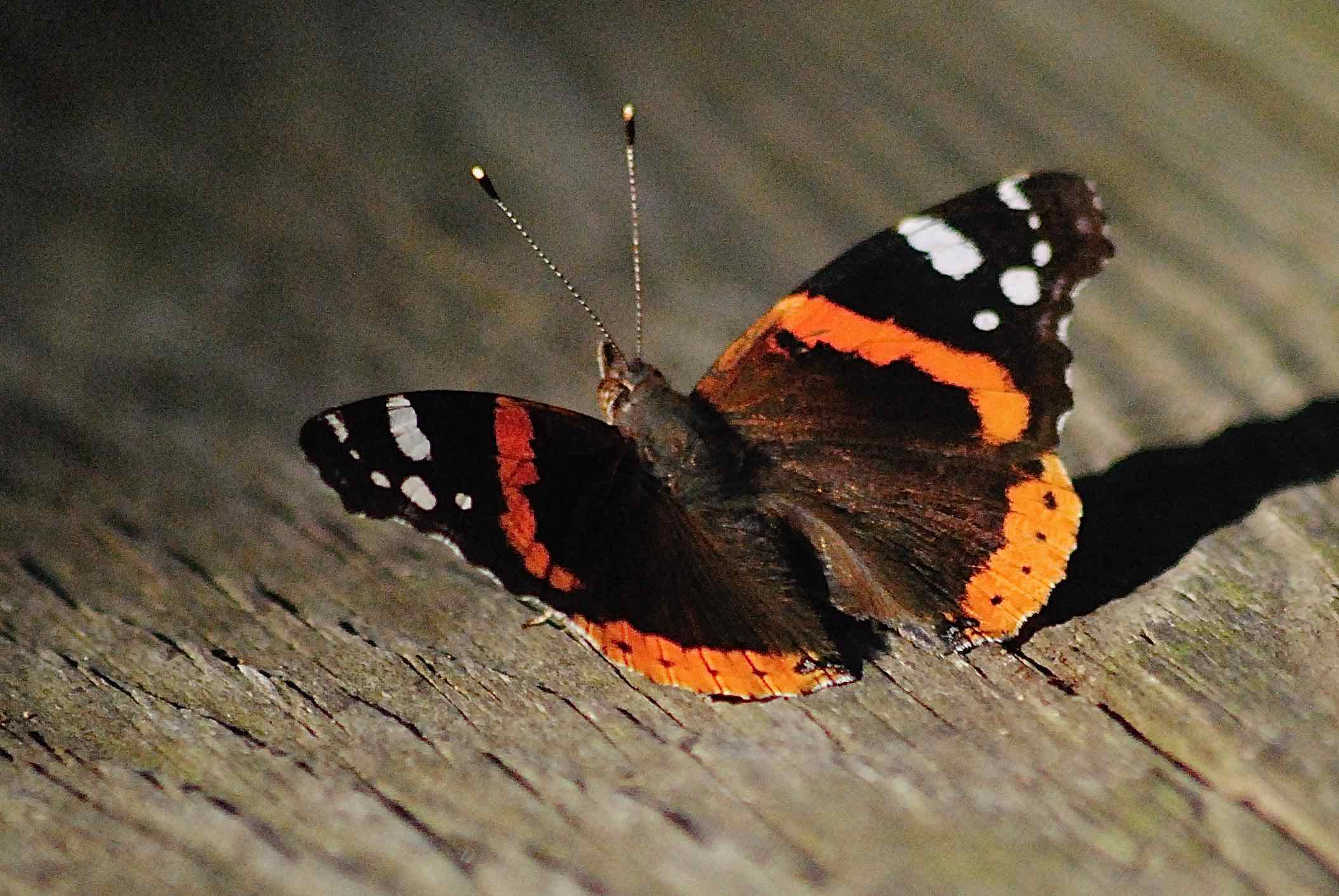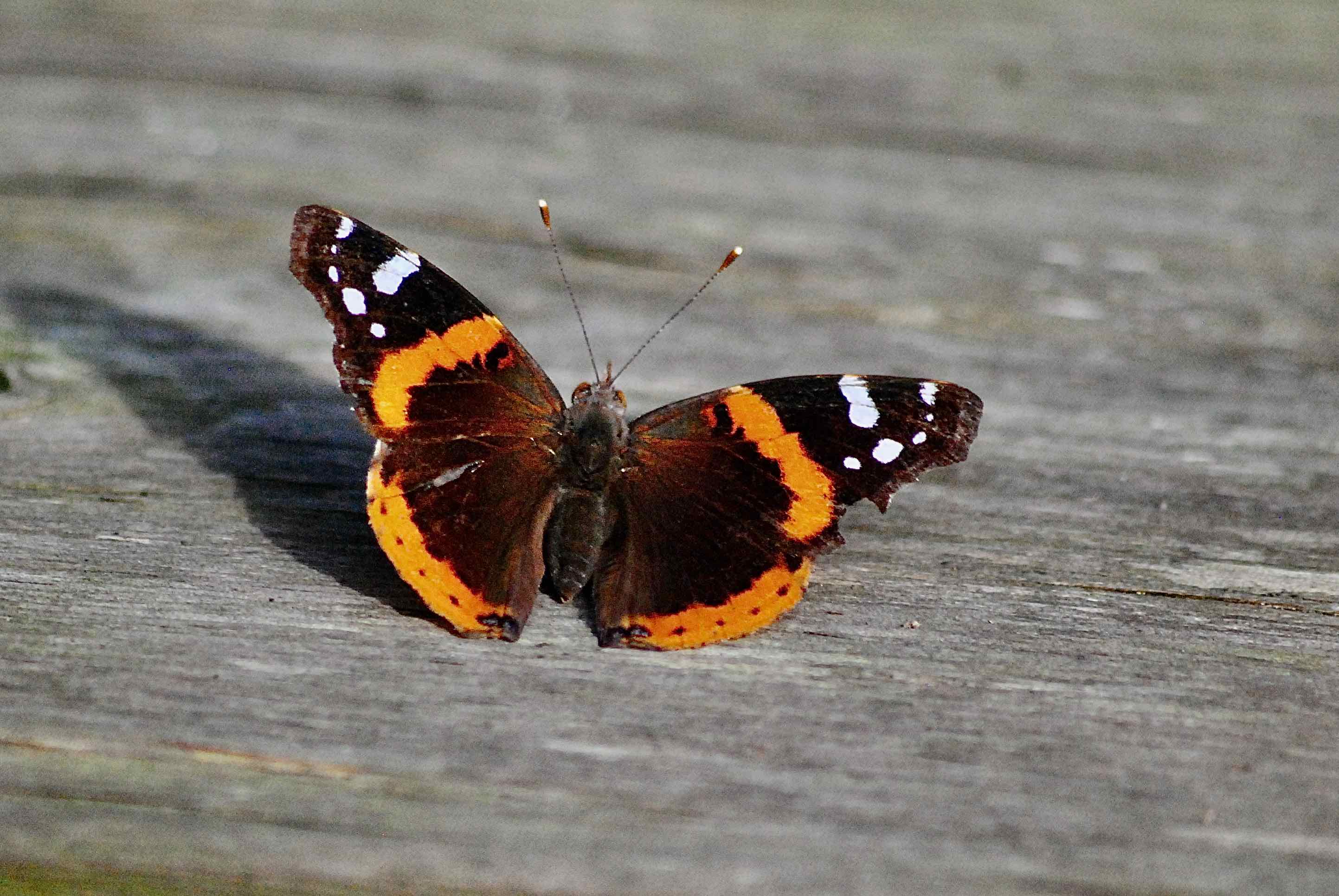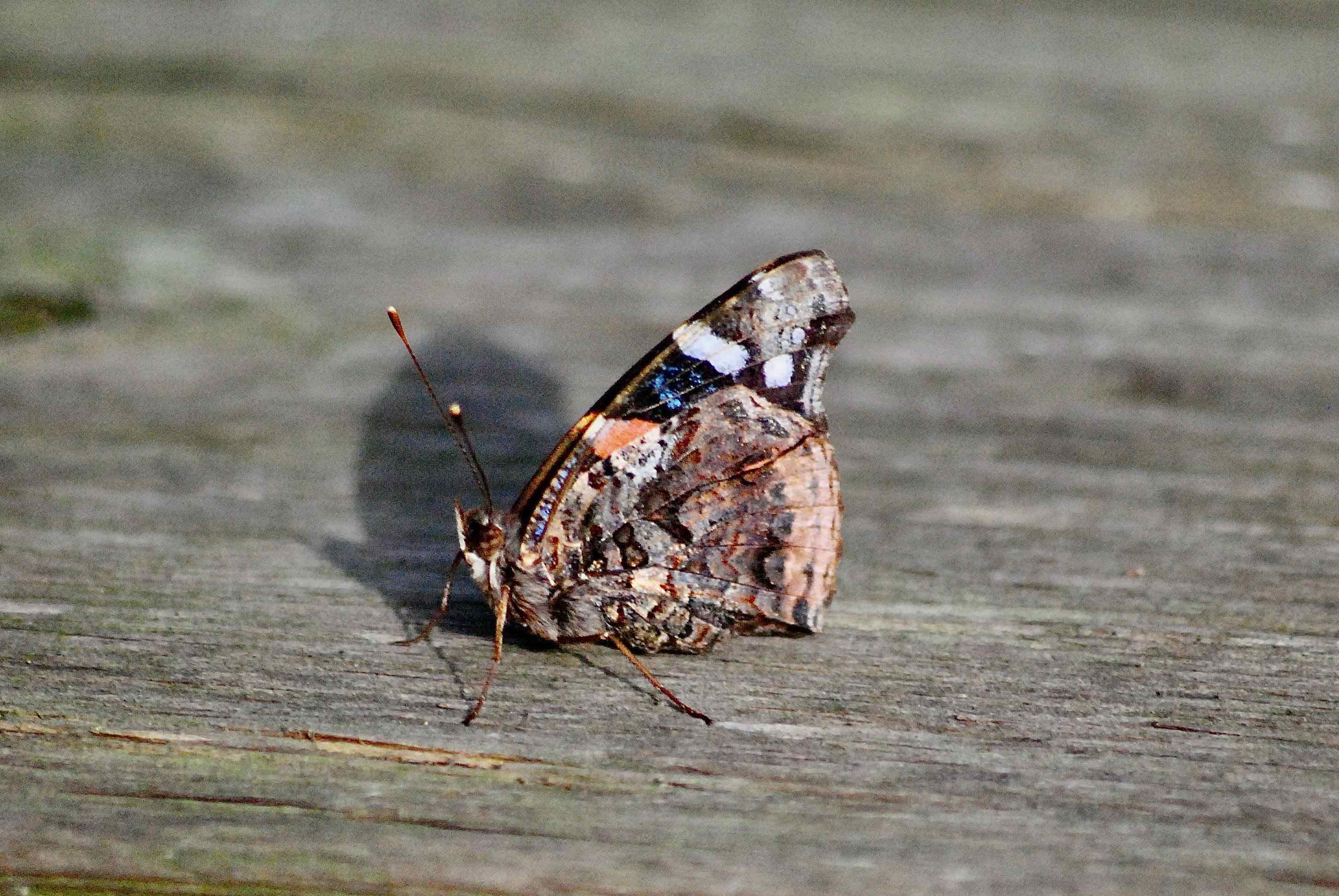
Red Admiral Butterfly photographed at Seacrest Scrub Natural Area, Boynton Beach, Palm Beach County, in March 2017.
The red admiral butterfly, Vanessa atalanta, has got to be among the most adaptable animals on the planet. It's found on nearly every continent and in nearly every habitat. Europe, Africa, Asia, New Zealand, Hawaii, you'll find it.
The tundra of northern Canada to Florida's subtropcial forests, the red admiral is there. Its only limitation, seemingly, is extreme cold. It has to retreat to warmer climates, like South Texas or sunny South Florida, to survive winter, although some researchers have found it hibernating as far north as New York. At winter's end, it will migrate north to repopulate the old haunts.
According to researchers at the Iowa State University, the red admiral is one of four members of genus Vanessa found in North America, and can be found most anywhere on the continent as far south as Guatemala. It's also found on some Caribbean islands.
It is a medium-size butterfly, with a wingspan between an inch and three quarters and three inches. The wings are mostly a dark mix of browns and black, with a prominent orange band that runs front to back on the forewings, which are marked near the tip with a series of white bands and dots. The rear edge of the hindwing has an orange band. Red admirals are more brightly colored in summer than in winter; males and females are similar. The underside has a kind of "quilted" appearance. In flight, its movements tend to be erratic.
In the warmer parts of its range, it will produce three generations a year (University of Florida researchers put the number at four); in the northern extremes, only one.
It uses various nettles as caterpillar hosts. Adults prefer to dine on tree sap, fermenting fruit and bird poop. It will feed on flowers, including milkweeds and members of the milkweed family if it can't any of the above. Adults also sip from mudpuddles.
Fun fact: as beautiful as the red admiral may be, you'll find references to it as the Butterfly of Doom, because it was especially abundant in 1881, the year Tsar Alexander II of Russia was assassinated. We spotted this one — and many others — at Green Cay Nature Center in Boynton Beach. We're not taking any extra precautions as a result.
Fun fact No. 2: the red admiral was the favorite butterfly of Nabokov — Vladimir, the Russian novelist and lepidopterist, not Evgeni, the Russian goaltender, even though Evgeni does employ the butterfly technique in his line of work, but not specifically the red admiral's. Hockey joke. Sorry. Red admirals, some believe were originally called red admirables, are members of Nymphalidae, the brush-foot family.
Seacrest Scrub Natural Area



